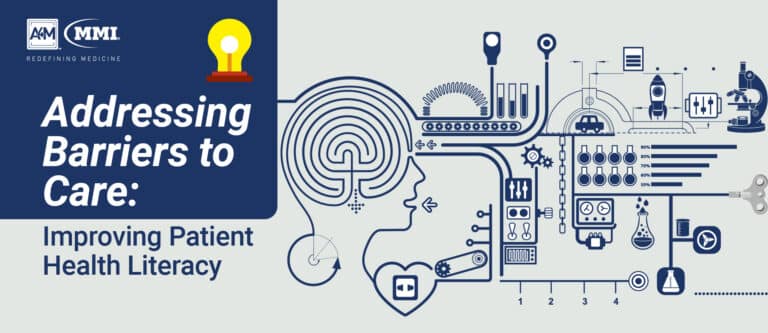Having adequate health literacy can increase a patient’s capacity to take responsibility for their and their family’s health. Individuals who lack health literacy may encounter challenges in understanding health information, including hospital discharge and treatment instructions, which may have detrimental effects on their health outcomes.
Efforts to Improve Health Literacy
Health literacy is not only the result of individual capacities but also of the complexities of the healthcare system. Organizations can prioritize interventions that aid them in improving understanding and increasing patient safety. A National Action Plan to Improve Health Literacy was released by the U.S. Department of Health and Human Services in 2010, seeking to engage public and private sectors in various high-level strategies aimed at expanding the population’s health literacy.
The goal of the action plan was to provide the population with access to accurate health information, deliver patient-centered care, support good health, and improve communications as well as understanding. Yet ten years later, health literacy remains a topic of concern with current estimates revealing between 36% and 59% of adults in the U.S. have low health literacy, resulting in an estimated $236 billion in annual costs burdening the American economy.
Factors Influencing Health Literacy
A number of factors can influence an individual’s health literacy, including household income, education level, race/ethnicity, age, and disability status. For instance, adults living below the poverty level tend to have lower health literacy than those living above the poverty level. This may be compounded by the characteristics influenced by poverty, such as insurance status, which impacts literacy more than most other factors. Uninsured and publicly insured individuals have one of the highest risks of low health literacy.
Additionally, health literacy challenges tend to impact older adults more than other age demographics. Adults aged 65 and older have a lower health literacy on average than those under the age of 65 although, they utilize more healthcare services, have more chronic diseases, and take more medications than any other age group. This issue is associated with increased reports of poor physical functioning, pain, limitations of daily activities, as well as poor mental health status. Research has also reported that older adult Medicare beneficiaries with low health literacy also experience higher medical costs, increased rates of ER visits and hospital admissions, as well as decreased access to healthcare.
Great disparities exist in health literacy among racial and ethnic minority groups as well as those who do not speak English as their first language. Data has shown that Hispanic adults have the lowest average health literacy, followed by Black and American Indian adults. This puts already disadvantaged demographics at even greater risk of not obtaining the care they need.
Consequences of Low Health Literacy
Alongside poorer physical and mental health, lower levels of health literacy cause patients to struggle to follow treatment plans, adhere to medication guidelines, complete necessary screenings, and receive recommended care. They also limit a patient’s ability to navigate important services for transportation, housing, nutrition, and other resources affecting accessibility.
New research reveals that expanding health literacy levels across the population could improve health outcomes and prevent nearly one million avoidable hospital visits, saving more than $25 billion annually among Medicare beneficiaries alone. As such, improving health literacy should be a matter of national priority; empowering patients to make informed decisions about their health choices requires their ability to access and understand medical guidance. Both public and private sectors are able to help improve health literacy by investing in practices and systems that can benefit patients of all ages.
Approaches to Improving Health Literacy
Approaches to health literacy need to be undertaken by healthcare professionals to facilitate a multidisciplinary bottom-up approach that directly reaches the patient population.
One necessary strategy is a commitment to clear and straightforward dialogue; small changes in word choice can make a big difference in patient understanding. Providers are encouraged to utilize alternative laymen phrasing in place of traditional medical and insurance references that may be difficult to comprehend. This can also help demystify diagnoses and reinforce the importance of self-management efforts.
Another small yet impactful approach is the adjustment of the style and tone of communications. For example, slowing down the pace of conversations, providing time for questions, ensuring access to translation services, and using visuals or demonstrations instead of texts to communicate instructions can benefit patient understanding. Healthcare professionals may choose to incorporate the teach-back method which checks for understanding by asking patients to repeat and explain care instructions.
A commitment from consumer-facing professionals – including physicians, nurses, and health insurance agents – to communicate in a more accessible way may have a significant impact on overall health literacy. As such, it is important to offer expanded health literacy training to medical professionals, test consumer-facing communications, release clear and comprehensible materials, and provide communications in multiple languages.
Limited health literacy is common and may be difficult to recognize, thus experts recommend practices assume all patients and caregivers may have trouble understanding health information and should communicate in ways that are easy to comprehend. Significant improvements in health literacy are necessary to help address disparities in health status and patient outcomes between different demographics. The onus is on the medical industry and community, which need to strive to ensure the patient population being served can understand all relevant information and consequently act in the better interest of their and their family’s health.




